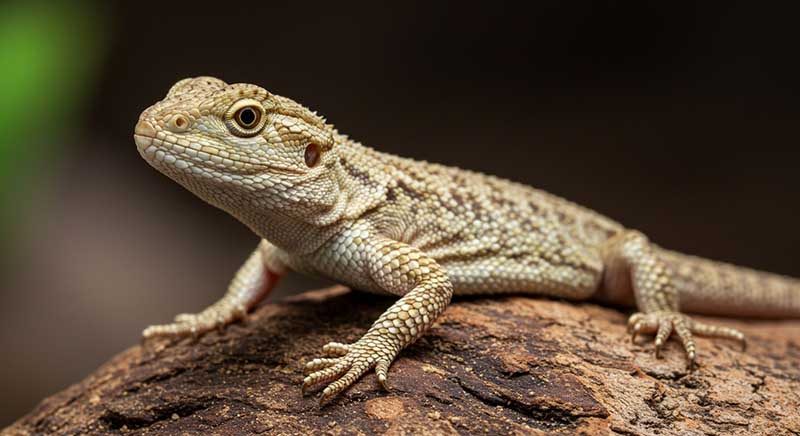Reptiles are captivating, low-maintenance pets that appeal to people of all ages due to their unique behaviors, fascinating biology, and beautiful appearances. Whether you are looking for a calm companion or an exotic new friend, reptiles offer an excellent entry into the world of exotic animal care. However, not all reptiles are equally suited to beginners. Some species require complex environmental setups, specific diets, or specialized handling. Choosing the right reptile from the start is key to a successful and enjoyable pet ownership experience.
This comprehensive guide will walk you through the best beginner reptiles, their care requirements, and important factors to consider before bringing one home.
Why Reptiles Make Great Pets
Reptiles are a great alternative to traditional pets for several reasons:
- Low allergen risk: Reptiles do not have fur or dander, making them suitable for allergy sufferers.
- Quiet companions: They don’t bark, meow, or chirp.
- Minimal daily maintenance: Many require feeding only a few times a week.
- Compact housing: Most reptiles thrive in well-set-up terrariums that don’t take up much space.
- Educational and engaging: Observing reptile behavior can be both fascinating and calming.
Factors to Consider Before Choosing a Reptile
Before selecting your first reptile, assess these key factors:
1. Enclosure Size and Space
- Some reptiles need large terrariums to thrive. Make sure you have the space to accommodate their adult size.
2. Temperature and Humidity Requirements
- Reptiles are ectothermic and rely on external heat sources. Understand the heating and humidity needs of your desired species.
3. Handling and Temperament
- Some reptiles enjoy or tolerate handling, while others prefer to be observed.
4. Diet and Feeding Frequency
- Diets vary widely from insects and rodents to greens and fruits. Feeding live food may not be suitable for everyone.
5. Lifespan
- Some reptiles live over 20 years. Make sure you’re ready for a long-term commitment.
Top Reptiles for Beginners
1. Leopard Gecko
- Scientific Name: Eublepharis macularius
- Lifespan: 15–20 years
- Size: 8–10 inches
- Diet: Insectivorous (crickets, mealworms)
- Pros: Easy to handle, no special lighting, low maintenance
- Cons: Requires feeding live insects
Leopard geckos are calm, easy to care for, and tolerate handling well. They are nocturnal and do not require UVB lighting, which simplifies their setup.
2. Corn Snake
- Scientific Name: Pantherophis guttatus
- Lifespan: 15–20 years
- Size: 3–5 feet
- Diet: Rodents (mice)
- Pros: Gentle, docile, easy to feed
- Cons: May escape if enclosure isn’t secure
Corn snakes are among the best beginner snakes. They are friendly, easy to handle, and thrive in a basic setup with proper heating.
3. Bearded Dragon
- Scientific Name: Pogona vitticeps
- Lifespan: 8–12 years
- Size: 18–24 inches
- Diet: Omnivorous (insects, vegetables)
- Pros: Sociable, expressive, enjoys interaction
- Cons: Needs UVB lighting and a spacious tank
Bearded dragons are personable and visually expressive, often enjoying sitting on their owner’s shoulder. They require a well-maintained basking spot and daily interaction.
4. Russian Tortoise
- Scientific Name: Testudo horsfieldii
- Lifespan: 40+ years
- Size: 6–10 inches
- Diet: Herbivorous (leafy greens)
- Pros: No insects, gentle, long-lived
- Cons: Needs outdoor time or a large indoor pen
Russian tortoises are great for those seeking a low-energy pet. They require consistent UVB lighting and high-fiber greens.
5. Ball Python
- Scientific Name: Python regius
- Lifespan: 20–30 years
- Size: 3–5 feet
- Diet: Rodents
- Pros: Calm, easy to handle, low activity
- Cons: Picky eaters, shy behavior
Ball pythons are known for their docile nature and ease of handling. They do best in secure, humidity-controlled environments.
Species to Avoid as a First Reptile
Some reptiles may be appealing but are not beginner-friendly:
- Green Iguanas: Grow very large and can be aggressive.
- Chameleons: Require precise temperature, humidity, and stress-free environments.
- Tokay Geckos: Known for their aggressive nature.
- Monitor Lizards: Large size and strength make them difficult for beginners.
Setting Up Your Reptile’s Habitat
Enclosure
- Choose the right size tank with secure lids.
- Vertical space for arboreal species; horizontal for terrestrial.
Heating and Lighting
- Use ceramic heaters, heat mats, or basking bulbs.
- Install a UVB bulb if needed based on species.
- Use timers to create a day/night cycle.
Substrate
- Paper towels, reptile carpet, or species-specific bedding.
- Avoid sand or loose substrates for species prone to impaction.
Decor and Hides
- Add climbing branches, rocks, hides, and foliage to simulate natural environments.
- Provide at least two hides: one on the warm side and one on the cool side.
Daily and Weekly Care Tasks
- Daily: Check temperature and humidity, spot clean waste, ensure fresh water.
- Weekly: Deep clean enclosure, sanitize decor, monitor behavior and appetite.
Reptiles for a Rewarding Start
Choosing the right reptile can lead to years of rewarding companionship. By selecting a beginner-friendly species and committing to proper care, you ensure both you and your new pet have a positive, enriching experience. Start small, do your research, and enjoy the incredible world of reptiles with confidence.
Whether you prefer the slow charm of a tortoise or the interactive energy of a bearded dragon, the perfect reptile companion is waiting for you to discover them.

I specialize in transforming homes into pet havens. I offer practical tips on creating safe environments, selecting stimulating toys, designing enriching spaces for pets, risk prevention strategies and daily care routines that prioritize animal well-being. Discover science-based solutions for happier, healthier companions.

